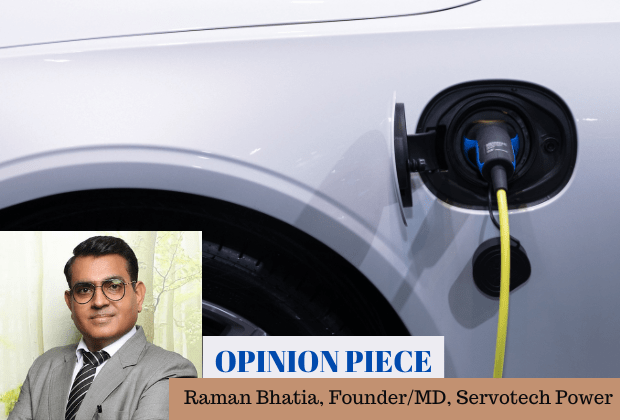
Vehicle-to-grid (V2G) technology marks a transformative phase in the intersection of Electric Vehicles (EVs) and power grids. This cutting-edge system allows electric vehicles to draw energy from the grid for charging and feed stored energy in vehicle batteries back into the grid when needed. V2G, often associated with bidirectional charging, establishes a dynamic relationship where EVs serve as a decentralized energy resource, benefiting both grid stability and EV owners. Understanding V2G involves exploring its functions, advantages, uses, global acceptance, and challenges and evaluating India’s readiness to integrate into the energy framework.
V2G Technology
The Vehicle-to-Grid or V2G is a technology wherein EVs supply stored electricity back to the power grid, particularly during peak hours, to meet the heightened energy demands. This technology facilitates bi-directional charging, allowing both charging the EV’s battery and returning the stored energy from the EV’s battery to the power grid. Although bi-directional charging and V2G are often used interchangeably, a subtle distinction exists between them. While bi-directional charging means two-way charging (charging and discharging), V2G technology only enables the energy to flow from the car’s battery back to the grid.
Delving into the Working of V2G
V2G technology enables EVs to communicate with the grid to draw electricity for charging or discharge excess energy back into the grid. During peak demand, these vehicles can supply stored energy, acting as a decentralized power source. Conversely, during off-peak hours, they charge when electricity is abundant. Implementing V2G technology requires smart technology, enabling an electric vehicle to sync with the electricity grid and inject power into the grid using a specialized bidirectional charger. These advanced devices, equipped with power converters, can either charge the EV’s battery or send power back to the grid as per instructions. Approval from the grid operator is essential to connect a bidirectional charger to an EV to supply power to the grid. Remote management by the grid operator, controlling the injected energy, is facilitated through a Virtual Power Plant program (VPP).
Exploring the Underlying Benefits of V2G Technology
Vehicle-to-grid technology represents a pivotal shift in energy management, seamlessly synchronizing thousands of EVs to function as a decentralized energy system. This innovation operates by supplying power during peak demand and charging during low demand, effectively balancing the grid’s energy requirements. This orchestration, known as a Virtual Power Plant (VPP), leverages cloud-based software to control numerous battery systems, amalgamating them into a virtual large-scale generator or storage system. Unlike conventional power plants, VPPs integrate diverse energy resources like solar panels, batteries, and EVs, providing unparalleled flexibility and grid stability. V2G’s bidirectional energy flow supports grid stabilization, balancing supply and demand fluctuations, particularly during peak hours or emergencies. EVs equipped with V2G capability offer voltage support to ensure consistent grid stability. Furthermore, bidirectional chargers, beyond grid support, possess power inverters, enabling backup power in blackouts, emphasizing their dual functionality. Moreover, V2G facilitates the integration of renewable energy sources, allowing EVs to store surplus energy from renewables like solar or wind power and redistribute it as needed, significantly advancing environmental sustainability by curbing greenhouse gas emissions.
V2G as a Mainstream Technology for EV Adoption
Standardized protocols and regulatory support are fundamental to propelling V2G technology into the mainstream. These initiatives ensure interoperability among diverse vehicles and charging infrastructure while encouraging the integration of V2G through transparent tariff structures and regulations for grid access. Expanding V2G-compatible charging infrastructure in residential areas, public locations, and workplaces simplifies V2G participation for EV owners. Collaborations among stakeholders drive technological progress, while large-scale demonstration projects showcase the advantages of V2G, promoting broader acceptance. Ongoing research and development remain crucial in refining V2G technology, optimizing energy management, and ensuring grid stability. As it moves toward becoming a mainstream solution.
India’s Readiness for V2G
V2G holds significant importance for India’s energy grid. India’s renewable energy capacity is set to grow to 500 GW by 2030, concurrently, an estimated 40% of new vehicle sales in India are expected to be EVs. Segments like two/three e-wheelers will potentially witness over 75% EV adoption. This presents a substantial opportunity to leverage EV batteries in advancing V2G technology within India’s energy landscape.
While India demonstrates promising potential for adopting Vehicle-to-Grid technology, its preparedness relies on certain critical factors. The evolving EV infrastructure lays a foundation, yet the scarcity of bi-directional chargers, essential for V2G, necessitates swift deployment. Regulatory frameworks must align with V2G integration, outlining grid access and incentivizing consumer participation. Strengthening the grid infrastructure becomes imperative, demanding adaptations to manage bidirectional energy flow effectively. Heightened public awareness about V2G benefits is essential, emphasizing its role in supporting the grid and promoting sustainability Comprehensive efforts including expanding infrastructure, regulatory clarity, grid enhancements, and awareness initiatives, are essential to drive India towards a successful integration of V2G.
Opportunities and Challenges to Look Forward to
As EVs spend a significant portion of their lifetime parked, their inherent battery storage capacity positions them as an appealing and flexible solution for the power system. This unique characteristic equates to extensive storage capacity within the EV fleets, transforming these EVs into adaptable loads and decentralized storage units, bolstering flexibility for supporting power system operations. V2G is particularly significant in solar-based systems, as its synchronization with renewable energy sources can alleviate excess load impact and harness synergies between EVs and renewables. Smart EV charging reduces dependence on carbon-intensive fossil fuel plants to balance renewable energy. Moreover, V2G implementation could potentially reduce the necessity for investments in distribution grid infrastructure
However, there are a few challenges that India must overcome before tapping into the V2G potential. With an anticipated growth of EVs in smaller vehicle segments, aggregating these vehicles or their batteries into a storage network becomes a more intricate task. An effective mechanism to consolidate these smaller vehicles or their batteries holds the key to unlocking substantial potential. Additionally, establishing bidirectional charging stations, pivotal for an aggregated battery network to function as an energy storage system, poses a challenge. Without this critical infrastructure, EVs can solely receive energy without the ability to supply it back to the grid. V2G offers a solution for achieving zero carbon emissions in both energy and mobility, presenting India with an opportunity to achieve its goals not just by 2030, but well into the future.
Moving Ahead
V2G technology serves as a transformative link between electric vehicles and energy grids, holding the promise of bolstering grid stability and sustainability. Although India shows promise in preparing for V2G integration, addressing infrastructure challenges and promoting regulatory alignment is crucial to propel this innovation toward a sustainable energy future.
(Raman Bhatia is the Founder & MD of Servotech Power System)



























